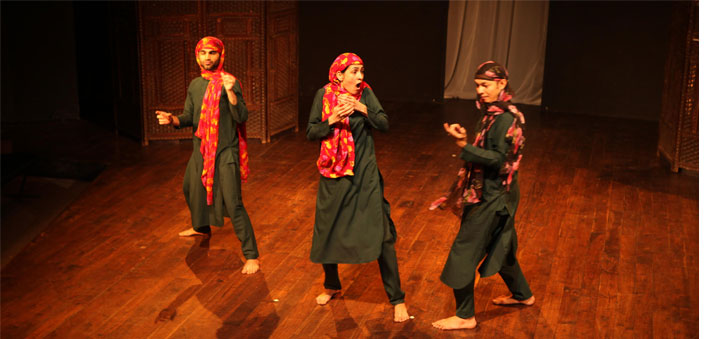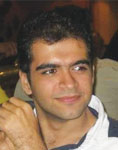Lihaaf, or The Quilt by Ismat Chughtai was first published in the Urdu journal Adab-i-latif in the year 1942. The events that followed its publishing were controversial to say the least, because the author had to spend a considerable amount of time in the courts of Lahore defending herself against charges of ‘obscenity’. But nothing could be proved. Why did that happen? How could Ismat Chughtai prove her innocence in a text that showcased the loss of innocence? Maybe because Lihaaf wasn’t just a motif in the story, it had a constant and definitive presence in the text of the work also. It separated word from meaning, and thought from action with such subtlety, that no obscenity could be proved from the text of this short story. With no mention of sexual intercourse or homosexuality in its entire length, Ismat Chughtai had said enough to communicate her intended meaning without whispering a word. Lihaaf through the many years that passed, eventually grew to be Ismat Chughtai’s most known work.
The contemporary take
Recently, a theatre company called Tricycle Productions rediscovered Lihaaf to explore its subtlety, and the large meanings that emerge between its innocent words. The tale is of Chunni, who finds herself in Begum Jaan’s beautiful palace. The massive structure is home to Begum Jaan and her Nawab. The Begum withers in loneliness as the Nawab finds solace in spending his time teaching ‘slender-waisted’ young boys. She wanes and her skin peels, and no Hakim has an answer to her pains of isolation. Until one day when an unattractive servant girl called Rabbo arrives, who is deft with her hands and has an answer for Begum Jaan’s agony. Her hands work like magic and Begum Jaan survives. Chunni sleeps in Begum Jaan’s room and when the darkness takes over, strange shapes begin to appear on the lihaaf. Co-incidentally the only other occupant who sleeps in the room is Rabbo – the masseuse. Chunni can sometimes see an elephant, and sometimes a snake, and these animals take the shape of her deepest, darkest fears. She queries but gets no answer, her fears only grow and sleep stays away. One day Rabbo leaves for her village to meet her son, much to the displeasure of her mistress. As Rabbo leaves Begum Jaan’s aches and pains return, she writhes in them until Chunni attempts to relieve her by being her masseuse. The Begum is thankful and teaches Chunni the art of making a paan, an act that changes Chunni forever. In this milieu, one can always see a lihaaf and the shadows that live inside it.
The play staged at the Marathi Sahitya Sangh had the deft touches of Rabbo’s hands, for it kept the story alive even though it changed its form from written word to a performance. The subtlety of intimacy between the Begum and Rabbo was preserved. Another interesting device that the cast used was shadow work to bring alive the realm of Chunni’s fears. The performers comprising Rohit Mehra, Radhika Chopra and Kartavya Anthwaal Sharma, play multiple characters. Rohit Mehra played the Nawab, Rabbo, Chunni’s father and the first servant girl. Radhika Chopra played Begum Jaan, Chunni’s mother, and the second servant girl, whereas Kartavya Anthwaal Sharma played Chunni, the Hakim, and the third servant girl.

What strikes one is the confluence of theatre styles that the group brings to the fore. Rohit Mehra represents a form of physical theatre that he brings from London International School of Performing Art. His characterisation of Rabbo is a representation of this style. Her grotesque yet elegant mannerisms are personified by Mehra through a body that has four hands and an animal-like form. Kartavya Anthwaal Sharma’s training at the Drama School Mumbai, brings Chunni to life, his effortless transition to the Hakim, is also equally worth mentioning. Radhika Chopra’s portrayal of Begum Jaan is subtle and the nuances of her solitude, and ache for intimacy are captivatingly done. The complexity of her relationship with the Nawab is exacerbated by silences, her intimacy with Rabbo is in her gaze, and her moments with Chunni are but moments that at face-value mean nothing, but on interpretation can mean a number of things. For what can the act of teaching a young girl how to make a paan mean? It is because the story had such myriad possibilities, that Ismat Chughtai was never found guilty in her trial of obscenity. Nothing is stated literally. The literal is silent.
Less is more
The set, the lights and the production on the whole, is minimalistic. The stage with just a bulb and a lihaaf is all that exists. The play is supported by the simplistic light design of Adi Shastri and has Trinetra Tiwari on production. Keith Sequeira holds the sound with his expertise as a percussionist, and he quite ably provides the necessary tempo that supports the story. The play heavily depends on the physicality of the performer and the moments of silence interspersed in it. The performers wear many hats throughout the act, and it is in these hats that they shift shapes.
The pertinent questions Lihaaf raised were for a community that found such discussions ‘obscene’ and ‘taboo’. Though many such communities still exist that would find dialogues on sexuality and lesbianism a matter of great discord. Yet many others have evolved where such discussions are not considered taboo anymore. Does Lihaaf remain relevant for both? Perhaps it does. For it shows the ability of the unsaid. Lihaaf wouldn’t be able to achieve its literary worth had it been a work that stated what it meant, because in the silences and shadows myriad meanings arise, and in those meanings the possibility of the angst of a lonesome woman, the claim to a partner of the same sex, the unfortunate harm to the mind of a young child, and the complexity of human relationships arise.
Lihaaf is a work that has found its way into history. But was it only relevant to the time when it was published in 1942? Or did it stay in the books just to be performed for the people that inhabit today’s world. Its relevance perhaps exists in a world where sexualities are questioned, its relevance exists in a world where women suffocate in an insulated life, and its relevance also lies in a time where innocence is lost. It is somehow more relevant today than it ever has been.
And as time goes by another shape appears, that of a woman, who tells a tale after years of her passing, through three performers behind a veil of hidden desires and truths.


 [/column]
[/column]